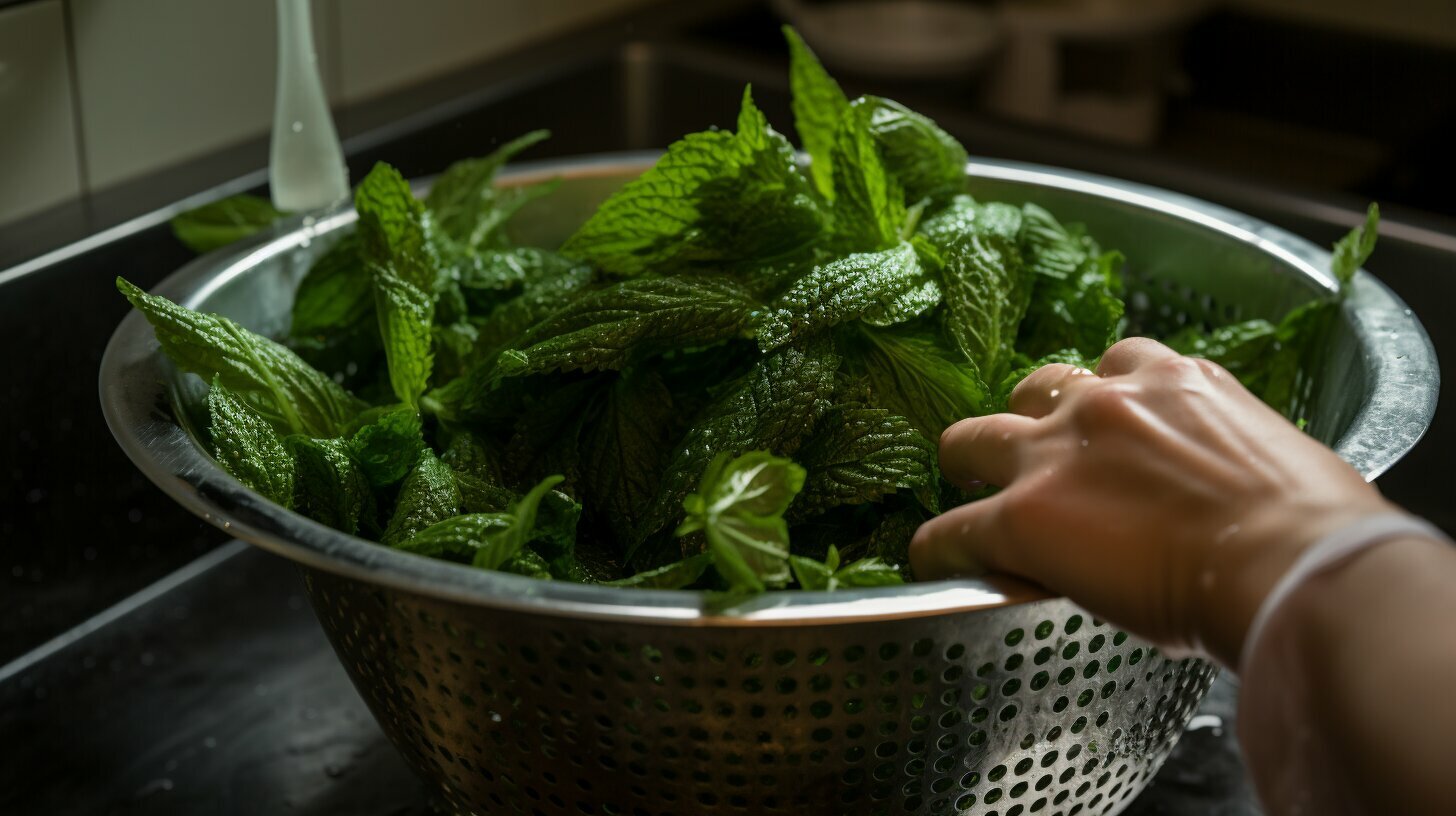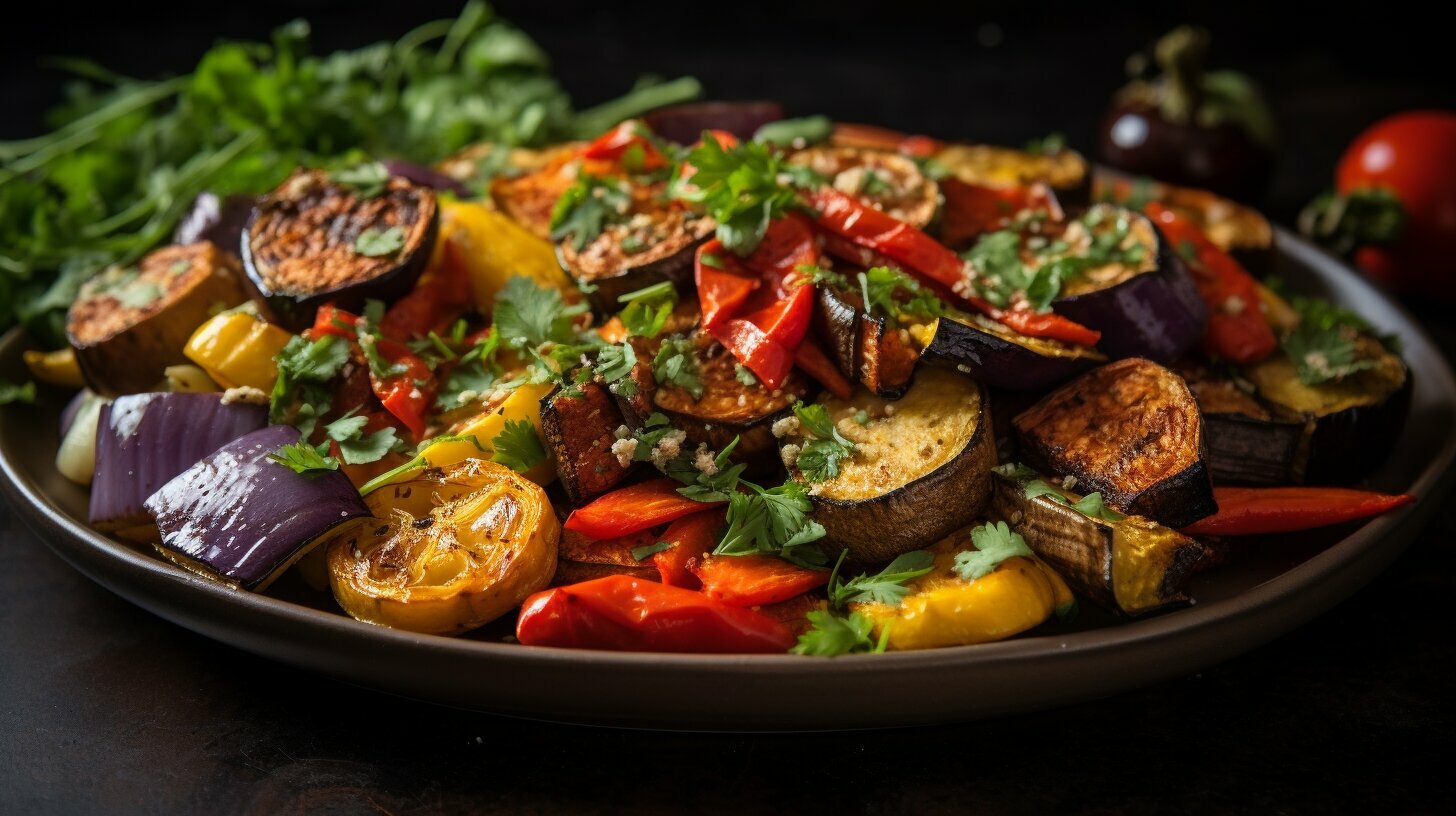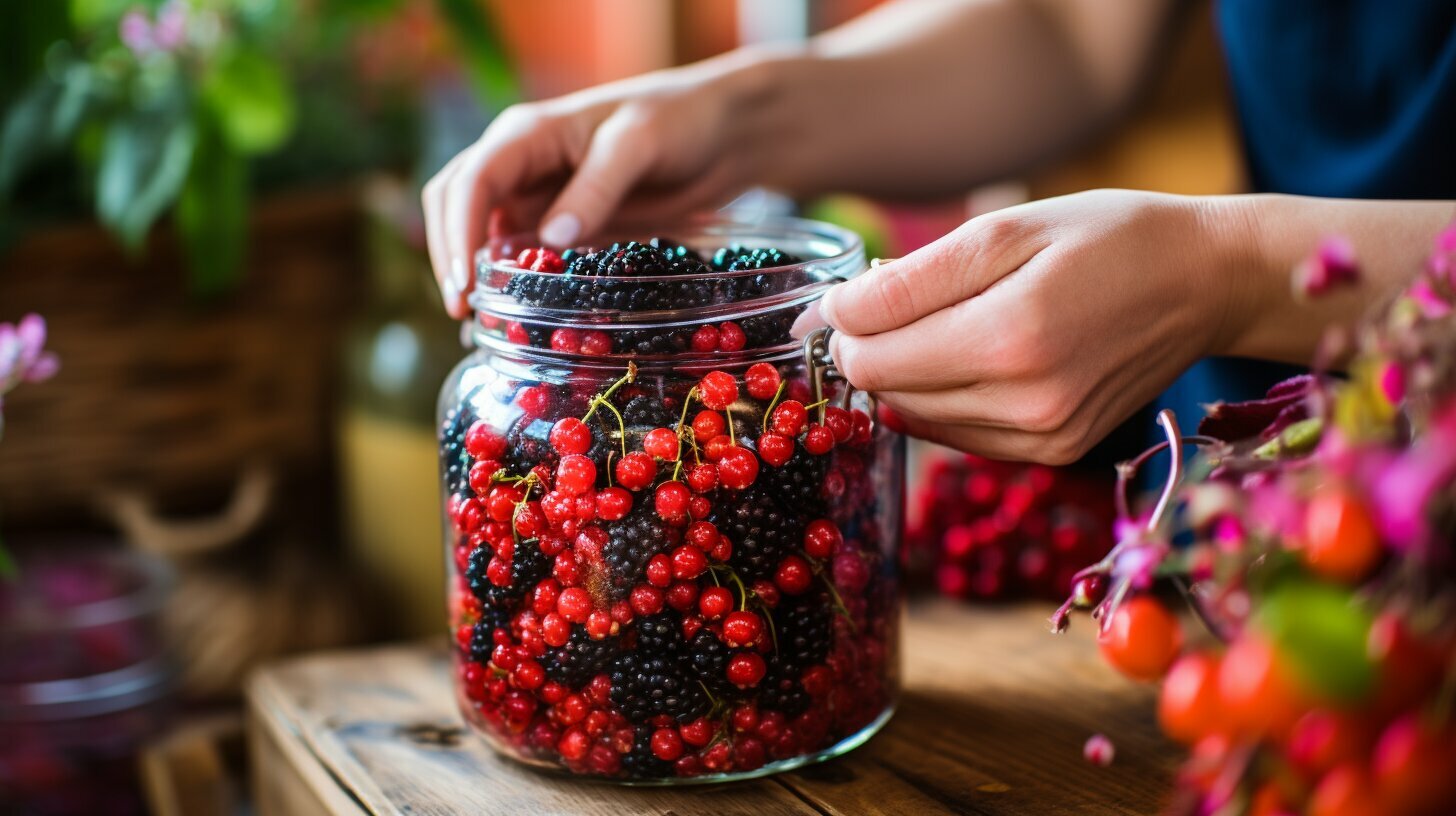Have you heard of the benefits of stinging nettles in cooking but are unsure how to prepare them? Don’t worry; it’s easier and safer than you might think! With a little knowledge and guidance, you can incorporate stinging nettles into your favorite dishes, bringing new flavors and nutritional benefits to your meals.
In this article, we’ll take you through the process step-by-step, from choosing and harvesting stinging nettles to cooking techniques and safety precautions. We’ll also explore the various culinary uses and health benefits of stinging nettles, so you can make the most out of this versatile ingredient.
Key Takeaways
- Preparing stinging nettles is easy and safe with proper knowledge and guidance.
- Stinging nettles offer various culinary uses and health benefits.
- This article will guide you through the process and inspire you to incorporate stinging nettles into your cooking.
Embracing the Benefits of Stinging Nettles
If you’re looking to elevate your cooking game, stinging nettles are a must-try ingredient. Not only do they have a unique and delicious flavor, but they are also packed with nutrients that can boost your health.
One of the best things about stinging nettles is their versatility as a cooking ingredient. They can be used in a variety of dishes, from soups and stews to pastas and even smoothies. And the best part? They are incredibly easy to prepare.
Disclosure: When you buy through links on our site, we may earn an affiliate commission.
When cooking with stinging nettles, it’s important to keep in mind that they do have a slightly bitter taste. However, this can be balanced out by using them in combination with other ingredients, such as garlic or lemon.
Stinging Nettles Cooking Tips
To get the most out of your stinging nettles, here are a few cooking tips:
- Try blanching the nettles before using them in your dish. This can help remove any bitterness and make them more tender.
- Don’t be afraid to experiment! Stinging nettles can be used in a variety of dishes, so don’t be afraid to get creative with your cooking.
- When using fresh stinging nettles, be sure to handle them with gloves to avoid any stinging sensations.
Stinging Nettles Recipes
If you’re not sure where to start with cooking stinging nettles, here are a few recipe ideas to get you started:
| Recipe | Description |
|---|---|
| Stinging Nettle Soup | A warm and comforting soup that highlights the unique flavor of stinging nettles. |
| Stinging Nettle Pesto | A twist on traditional pesto that uses stinging nettles instead of basil. |
| Stinging Nettle Risotto | A creamy and savory risotto that incorporates the delicious flavor of stinging nettles. |
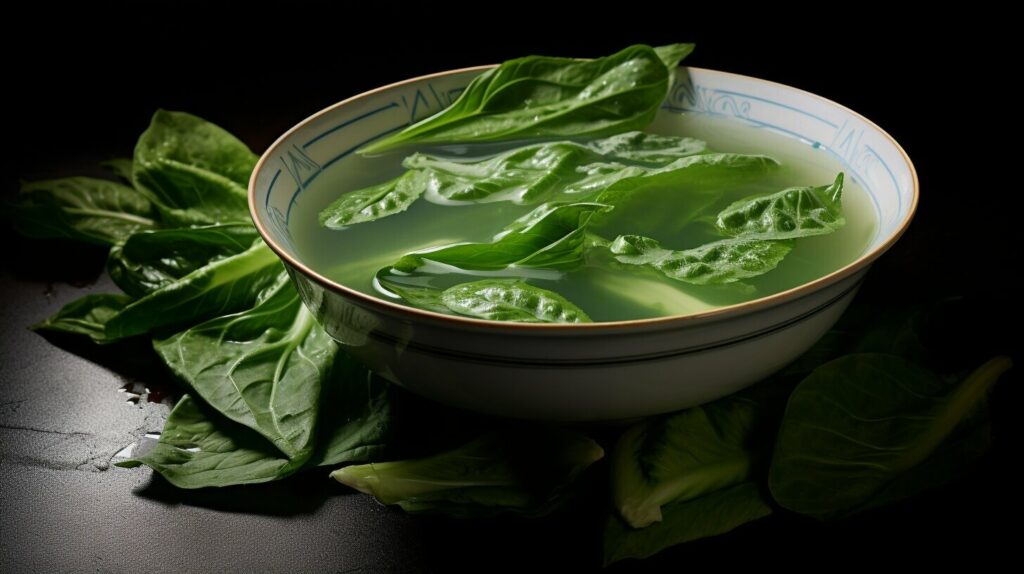
Choosing and Harvesting Stinging Nettles
If you’re planning to use stinging nettles in your cooking, it’s important to select and harvest them properly to ensure they’re safe and fresh to eat. Here are some tips on preparing stinging nettles for cooking:
Finding and Identifying Stinging Nettles
Stinging nettles typically grow in moist, shaded areas like forests, along streams, and in ditches. They have serrated leaves with a heart-shaped base and are covered in tiny hairs that can cause a stinging sensation if touched. When foraging for stinging nettles, wear long sleeves and pants and use gloves to protect your skin from the stinging hairs.
Harvesting Stinging Nettles
The best time to harvest stinging nettles is in the spring when they’re young and tender. Avoid harvesting them after they’ve started to flower as the leaves can become bitter and tough. Use a pair of scissors or garden shears to cut the tops of the nettles, leaving a few inches of stem attached.
Handling Stinging Nettles
When handling stinging nettles, wear gloves to avoid getting stung. If you don’t have gloves, use tongs or a plastic bag to handle them. Be sure to rinse them thoroughly under cold running water to remove any dirt or debris. Don’t handle the nettles with bare hands until after they’ve been blanched or cooked.
Storing Stinging Nettles
If you’re not using your stinging nettles right away, store them in a plastic bag in the refrigerator. They’ll keep for up to a week. Alternatively, you can blanch them and freeze them for later use.
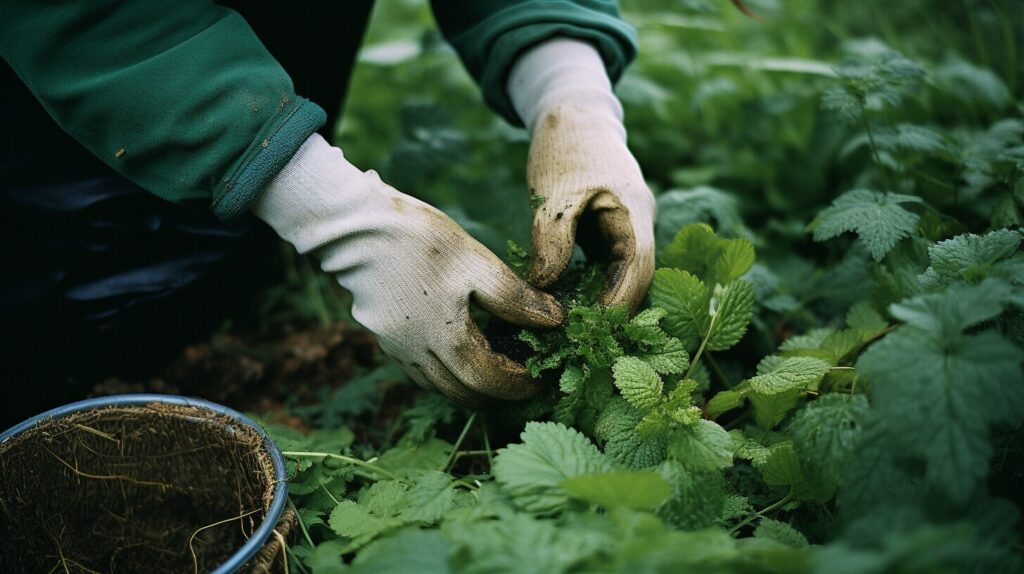
Stinging Nettles Safety Precautions
Preparing stinging nettles is easy and safe as long as you take the necessary precautions. Stinging nettles can cause skin irritation and allergic reactions in some people, so it’s important to handle them with care. Here’s a beginner’s guide to preparing stinging nettles safely:
Wear Gloves
Always wear gloves when handling stinging nettles. This will protect your skin from the tiny hairs on the leaves that can cause a stinging sensation and irritation.
Avoid Direct Contact
Avoid touching stinging nettles with bare skin, even if you’re wearing gloves. When you’re harvesting or preparing them, use tongs or a fork to handle them.
Blanch Them First
Blanching stinging nettles for a few seconds in boiling water is an effective way to remove the stinging hairs and make them safe to handle and eat. After blanching, immediately plunge them into a bowl of ice water to stop the cooking process.
Discard the Stems
Stinging nettle stems are tough and fibrous and can be unpleasant to eat. To prepare the leaves for cooking, remove the stems by holding the tip of the stem and pulling downwards, stripping the leaves off.
Thoroughly Wash Them
Before cooking, you should wash stinging nettles thoroughly to remove any dirt or impurities. Place them in a large bowl of cold water and swirl them around for a few minutes to remove dirt and grit. Drain the water and repeat the process until the water runs clear.
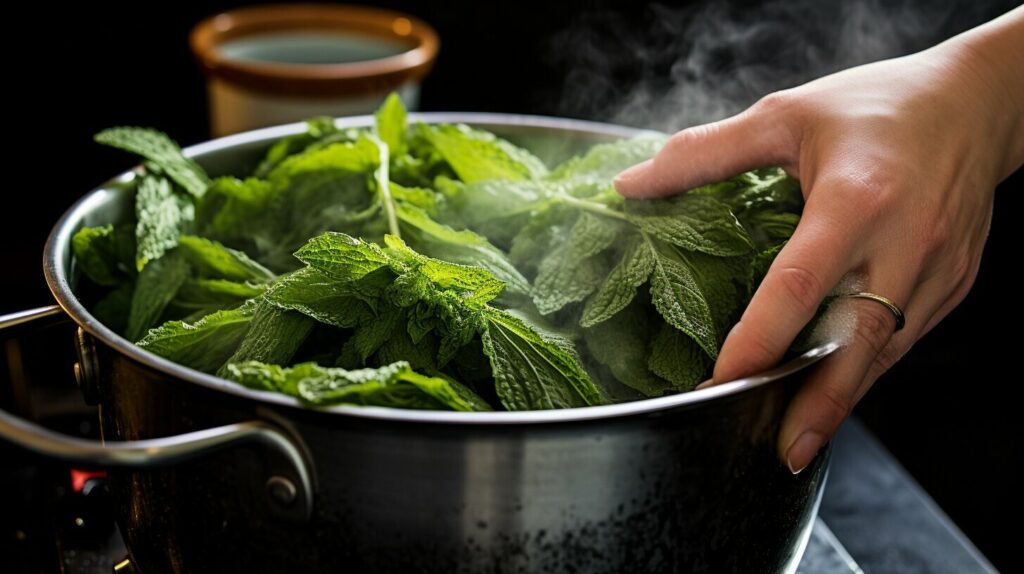
By following these safety precautions, preparing stinging nettles can be an easy and enjoyable process. Now that you know how to prepare them safely, you can start incorporating this nutritious and delicious ingredient into your cooking.
Washing and Cleaning Stinging Nettles
To prepare stinging nettles, it’s important to start with clean and properly washed leaves. Follow these step-by-step instructions to wash and rid them of any impurities:
- Fill a large bowl or sink with cold water.
- Using gloves, pluck the leaves off the stems and place them in the water.
- Swish the leaves around gently to loosen any dirt or debris.
- Drain the water and refill the bowl/sink with fresh water.
- Repeat this process a few times until the water is clear and free of any impurities.
- Remove the leaves from the water and pat them dry with a clean towel or paper towel before using.
By properly washing and cleaning stinging nettles, you can ensure that they are free of any dirt, bugs, or other contaminants and that they will be safe to use in your cooking. Now that they are cleaned, it’s time to move on to blanching them.
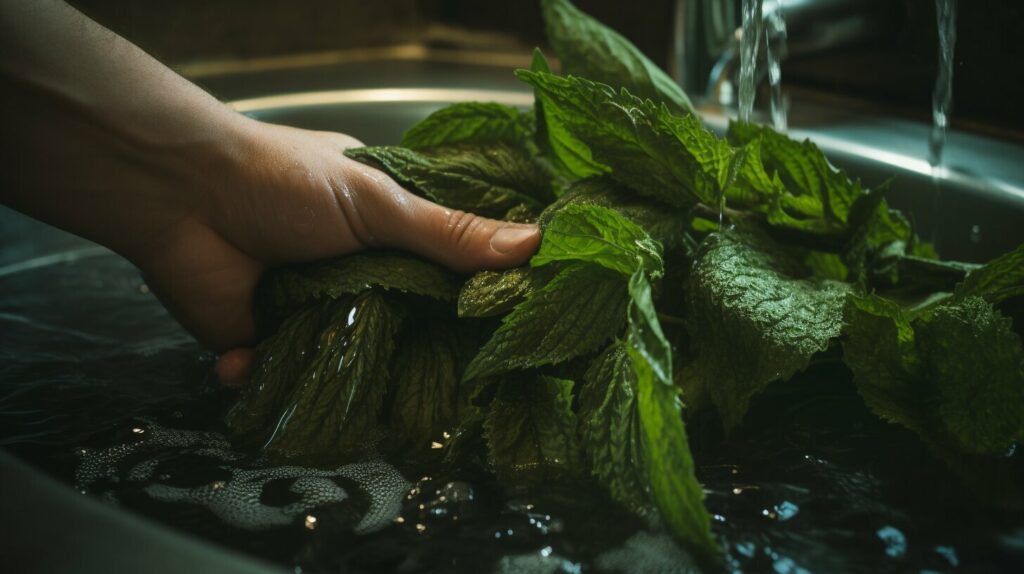
Blanching Stinging Nettles
Blanching stinging nettles is an essential step in preparing them for cooking. Blanching involves boiling the leaves briefly in water and then plunging them into ice-cold water to stop the cooking process. This helps to remove the stinging hairs and makes the leaves softer and more palatable.
To blanch stinging nettles, start by filling a large pot with water and bringing it to a rolling boil. While the water is heating up, prepare a bowl of ice-cold water and set it aside. Once the water is boiling, add the stinging nettles and let them cook for about 30 seconds to 1 minute, depending on the size of the leaves. Remove the leaves from the boiling water using tongs or a slotted spoon and immediately transfer them to the bowl of ice water. Let them cool in the water for a few seconds, then drain them well.
After blanching the stinging nettles, you can use them in a variety of recipes, such as pesto, soups, or stir-fries. Just be sure to squeeze out any excess water before using them in your dish.
| Benefits of Blanching Stinging Nettles | How to Blanch Stinging Nettles |
|---|---|
|
|
Cooking Techniques with Stinging Nettles
Now that you’ve learned how to prepare stinging nettles safely, let’s explore some cooking techniques to incorporate them into your meals. Stinging nettles can be sautéed, steamed, or used in soups and stews.
To sauté stinging nettles, heat up some olive oil in a pan and toss in the leaves until they’re wilted. You can also add garlic and lemon juice for flavor. Steamed stinging nettles make a great side dish – simply steam the leaves until they’re softened and season with salt and pepper.
Stinging nettles can also add a unique twist to soups and stews. Add them towards the end of cooking to maintain their bright green color and subtle flavor. For example, try adding them to your next batch of chicken noodle soup for added nutrients and flavor.
- Nettle Pesto: Mix blanched nettles with garlic, pine nuts, parmesan, olive oil, and lemon juice in a food processor to make a flavorful pesto. Use it as a spread on sandwiches or as a topping for grilled chicken or fish.
- Nettle Soup: Boil nettles with potatoes, onions, and chicken or vegetable broth until they’re soft, then blend until smooth. Add cream and seasoning, and serve hot.
- Nettle Frittata: Sauté nettles with onions and garlic, and toss them into a frittata with eggs, cheese, and any other ingredients you like.
These are just a few ideas to get you started – feel free to experiment with stinging nettles in your own cooking!
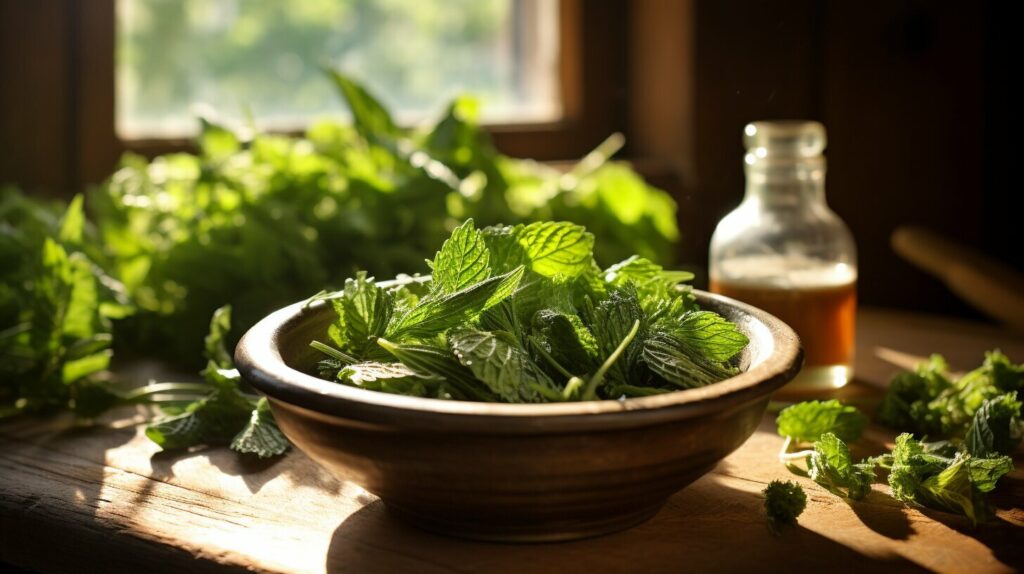
Storing Stinging Nettles
Storing stinging nettles properly is key to maintaining their freshness and maximizing their shelf life. Here are some tips that you can follow:
- Store them in a perforated plastic bag. This will allow for air circulation, which will help keep them fresh.
- Place the bag in the refrigerator crisper drawer. This is the coolest area of the fridge and will help keep the nettles fresh for up to a week.
- If you have too many nettles to consume within a week, you can freeze or dry them for later use.
To freeze nettles, blanch them for two minutes, then plunge them into cold water to stop the cooking process. Drain, then freeze in an airtight container for up to six months.
To dry nettles, wash and pat them dry, then tie them into small bundles and hang them in a warm, well-ventilated area for several days until completely dry. Once dry, crumble the leaves and store in an airtight container for up to a year.
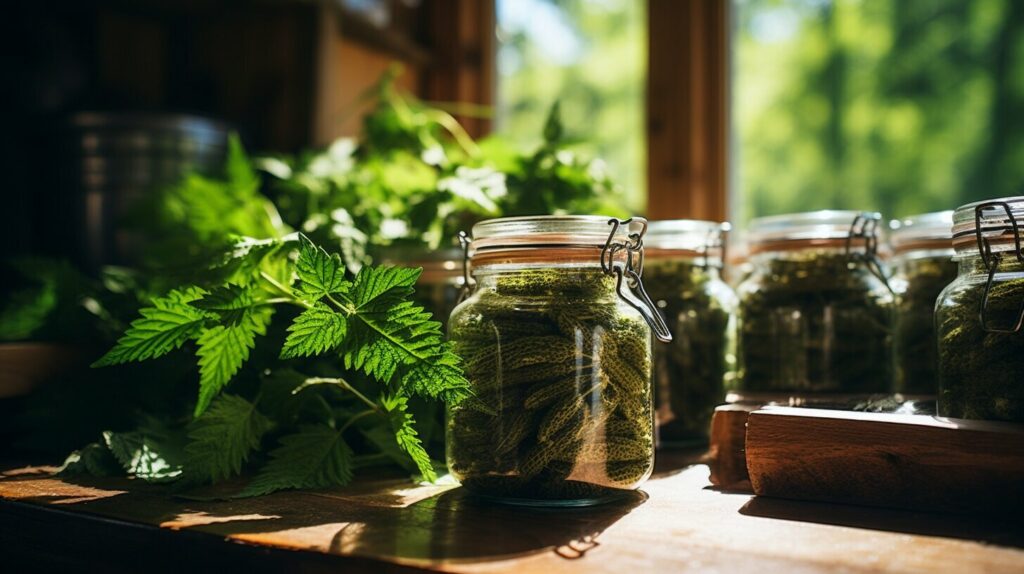
Precautions and Allergies
While stinging nettles are a delicious and nutritious addition to any meal, there are some precautions you should take when handling and consuming them. The small hairs on the leaves and stems can cause skin irritation and a stinging sensation, so it’s important to wear gloves or use tongs when handling them. Avoid touching them directly with your bare hands.
It’s also important to be aware of any potential allergies you may have to stinging nettles. Some people may experience an allergic reaction similar to that of a bee sting, with symptoms ranging from mild itching and hives to more severe reactions like difficulty breathing or anaphylaxis. If you have a history of allergies or are unsure whether you may be allergic, it’s a good idea to consult with a healthcare professional before consuming stinging nettles.
Finally, be sure to only harvest stinging nettles from areas that are free from pesticides and pollutants. Choose a location that is far from roads, as car exhaust can easily contaminate plants growing nearby. It’s also a good idea to ensure that any stinging nettles you consume are fresh and have not been sitting out for too long.
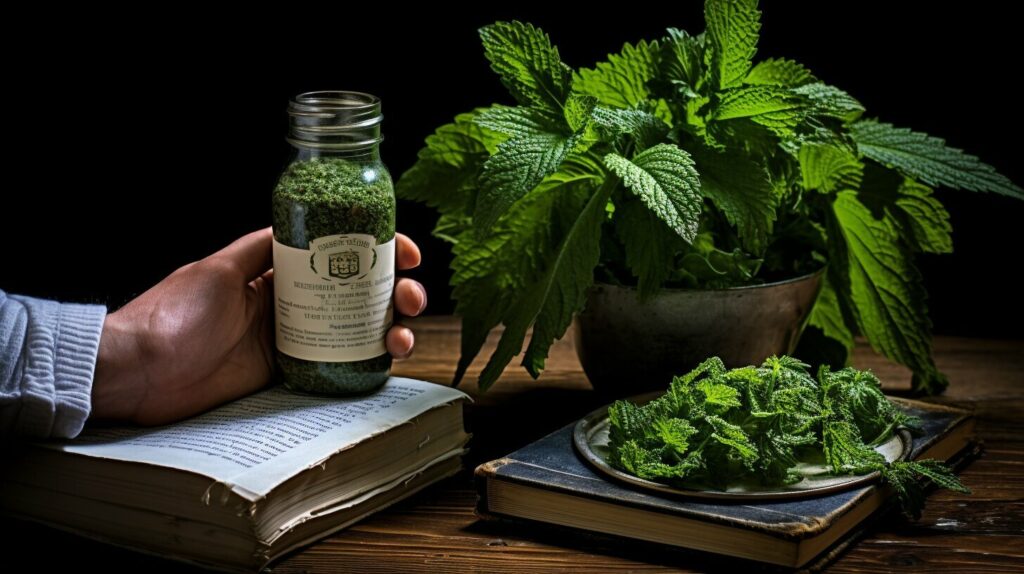
Tip: If you do experience skin irritation from stinging nettles, applying a paste made from baking soda and water can help alleviate the sting. Simply mix the two ingredients into a thick paste and apply it directly to the affected area.
Exploring Culinary Uses for Stinging Nettles
Stinging nettles can be used in a variety of dishes, from appetizers to desserts. Here are some recipe ideas to help you get started.
Stinging Nettle Risotto
Add some flavor to your risotto with chopped stinging nettles. Sauté them with garlic and add them to your favorite risotto recipe. Top with Parmesan cheese and enjoy.
Stinging Nettle Soup
Make a nutritious and delicious soup by blending blanched stinging nettles with vegetable or chicken broth. Add potatoes, onions, and garlic for extra flavor.
Stinging Nettle Pesto
Replace basil with stinging nettles to make a new twist on a classic pesto. Simply blend blanched stinging nettles with garlic, pine nuts, Parmesan cheese, and olive oil. Enjoy over pasta or as a dipping sauce for bread.
Stinging Nettle Quiche
Make a savory quiche by adding cooked stinging nettles to your eggs and cheese mixture. Bake in a pie crust and serve warm.
Stinging Nettle Tea
Take advantage of the potential health benefits of stinging nettles by making tea. Steep dried stinging nettles in hot water for a few minutes and add honey or lemon for extra flavor.
With these cooking tips and recipe ideas, you can easily incorporate stinging nettles into your meals. Try something new and enjoy the flavor and potential health benefits of this unique ingredient.
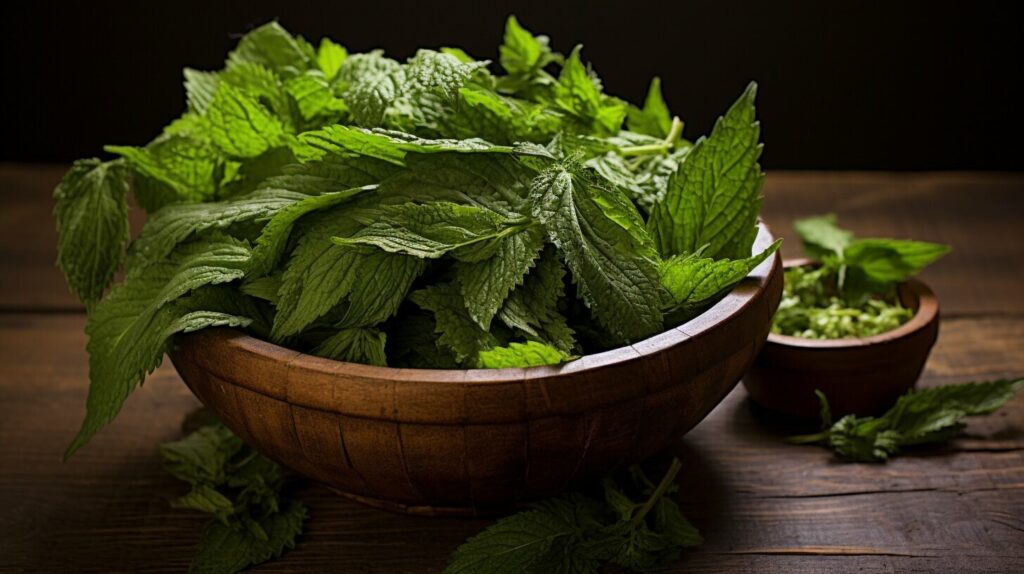
Health Benefits of Stinging Nettles
Stinging nettles are not just delicious but also offer many health benefits. Rich in vitamins A and C, iron, potassium, and calcium, they can help boost your immune system, improve your bone health, and lower your blood pressure.
They are also high in antioxidants that help fight inflammation and protect your cells from damage caused by free radicals. This makes them a great addition to your diet, especially if you suffer from arthritis, allergies, or asthma.
In addition, stinging nettles have been used in traditional medicine for centuries to treat a variety of ailments, including urinary tract infections, hay fever, and eczema. They have diuretic and antihistamine properties that make them effective in reducing inflammation and treating allergic reactions.
Incorporating stinging nettles into your diet is easy and can provide a natural way to support your overall health. Try adding them to soups, stews, or omelets, or simply sauté them and serve as a side dish.
Remember to always wear gloves and handle stinging nettles with care. Follow proper preparation and cooking techniques to ensure their safety and enjoy all the amazing benefits they have to offer.

Conclusion
You have now mastered the art of preparing stinging nettles! With these tips and techniques, you can easily and safely incorporate this nutritious plant into your cooking. From washing and blanching to cooking and storing, you know everything you need to enjoy the benefits of stinging nettles.
Remember, stinging nettles offer a wealth of culinary uses and health benefits. They can be incorporated into everything from appetizers to drinks, and may even help with specific health conditions. So why not experiment with different recipes and find your favorite ways to use stinging nettles in the kitchen?
With the information in this guide, you can confidently prepare stinging nettles and create delicious, healthy meals for you and your loved ones. So go ahead, grab some gloves, and get cooking!
FAQ
Q: Can I eat stinging nettles raw?
A: While it is possible to eat stinging nettles raw, it is not recommended due to their stinging hairs. It is best to cook or blanch them before consuming.
Q: How do I remove the stinging hairs from stinging nettles?
A: To remove the stinging hairs from stinging nettles, blanch them in boiling water for a few minutes, then drain and rinse with cold water. This will make them safe to handle and eat.
Q: Are stinging nettles safe for everyone to consume?
A: Stinging nettles are generally safe for most people to consume. However, if you have known allergies to plants in the nettle family, it is best to avoid them. It is always recommended to consult with a healthcare professional before adding new foods to your diet.
Q: Are there any special precautions I should take when handling stinging nettles?
A: Yes, it is important to wear gloves when handling stinging nettles to avoid contact with the stinging hairs. It is also recommended to avoid touching bare skin with the nettles and to wash your hands thoroughly after handling them.
Q: Can I freeze stinging nettles for later use?
A: Yes, you can freeze stinging nettles for later use. Blanch them first, then let them cool completely before placing them in an airtight container or freezer bag. They can be stored in the freezer for up to six months.

